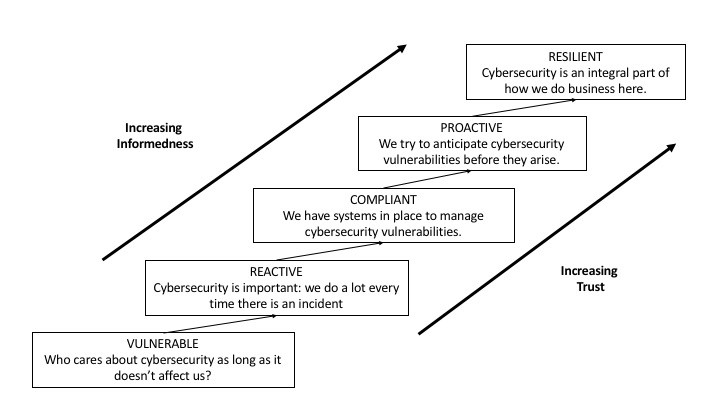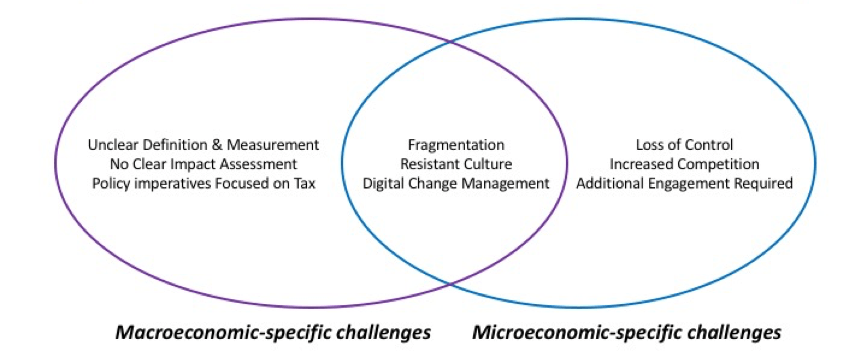As part of my Masters of Applied Science in Technology Innovation Management, we were regularly asked questions about the use of technology. This is the response to one of the questions.
Should every company establish a virtual community to benefit from user input?
Over 80% of high-tech firms listed in the S&P 500 have virtual communities that help generate user input (Mahr & Lievens, 2012). This may lead some managers to believe that a virtual community is a “must have” for their organization. This essay seeks to determine whether the statement “every company should establish a virtual community to benefit from user input” is accurate. This statement will be deconstructed into its component parts and the relevant portions debated through the use of selected readings.
First, the question asks whether this solution is appropriate for every company; this statement is understood to mean both high-tech as well as other industries. The ability to benefit from user input is not limited to high-tech; companies across many industries (including automotive, retail, and health care) engage with customers to obtain valuable knowledge for their innovations (Mahr & Lievens, 2012). One prominent example is LEGO™ – a company that develops physical products. This organization has an extensive user community that has contributed to product design and future development (Hienerth, Lettl, & Keinz, 2014). There is, therefore, the potential for customer feedback to be more broadly applicable to various industries, and not limited to high-tech.
Second, the language is specific to the environment in which feedback is provided – it asks whether a virtual community should be established. Hienerth et al. (2014) identify the existence and importance of synergies that emerge from even more integrated ways of innovating,- ways that extend beyond bilateral interactions between individuals, communities, and firms. Virtual platforms are a cost-effective means of collecting feedback, mainly due to the increase in digitalization and a decrease in the costs of communication (Mahr & Lievens, 2012).
Third, it asks whether it is beneficial to obtain user input, but is non-specific to the type of user or the type of input. Customers represent a unique source of knowledge that cannot be obtained from other sources that can be critical for the success of new products and services (Prahalad & Ramaswamy, 2004); however, the literature suggests a preference for lead users. Unfortunately, lead users might not always be an appropriate source of knowledge, as these consumers possess a level of technical expertise and problem-solving persistence that ordinary users do not reach (Mahr & Lievens, 2012). Put bluntly, lead users may hinder the creation of some types of knowledge because of their differences from ordinary users (Magnusson, 2009;). Furthermore, customers’ needs are often unclear at the beginning of the development process and change continuously, which makes it impossible to establish them conclusively (Mahr & Lievens, 2012). So while much of the research suggests customers with lead user characteristics contribute to commercially successful products (von Hippel, 2005), other literature suggests it can harm innovativeness (Christensen, 1997). Pedrosa (2012) suggests that a threshold level of obtaining customer needs exists in each stage of the development process and once this has been reached, obtaining additional customer needs seems to hamper innovation efforts. As such, there is no clear answer as to which user is best to contact for insight.
Finally, the wording is specific as to who establishes the community – the company, not the user. Herneith et al. (2014) identify multiple benefits including the potential for breakthrough innovation, diversity of knowledge for problem-solving, knowledge accumulation, user-to-user assistance, unpaid marketing efforts, and recruitment of lead users from the community. Challenges included the lack of sustainable producer–user interaction, IP issues, loss of control, difficulties channelling creative activities of communities toward the producer firm, and that the overall process can be cost-intensive (Hienerth et al., 2014). So while there are potential benefits to a firm hosting a virtual community, there are additional drawbacks that may make this more difficult. The most significant advantage of being the owner and developer of the community, however, remains the ability to guide the cultural development and provide a clear communication of its purpose through various pages (e.g. “About Us” or “Participation Rules), as well as the ability to direct users with unrelated posts (e.g. assistance requests) to other communities (Mahr & Levens, 2012).
In short, the statement “every company should establish a virtual community to benefit from user input” is too generic to be useful – thus, a clear answer isn’t possible. Taking into account the above, I would argue that while every company can benefit from user input, not all user input is equal (e.g., ordinary user vs. lead user) and not all communities must be virtual. This is one of many options that are available to an organization; it is imperative that each firm determines the business case for implementing any company-led virtual communities and define the objective from the outset, to avoid implementation of solutions that are unsuitable to their environment and can cause grief amongst users. A preferable statement would be that “every company should investigate whether establishing a virtual community will enable the collection of valuable user input, in a financially sustainable manner.”
[text-blocks id=”individual-consulting”]
References
Ardichvili, A., Page, V., & Wentling, T. 2003. Motivation and barriers to participation in virtual knowledge-sharing communities of practice. Journal of Knowledge Management, 7(1): 64–77.
Brandt, R. 1995. Punished by rewards. Educational Leadership: Journal of the Department of Supervision and Curriculum Development, N.E.A, 53(1): 13–16.
Chaudhary, N., & Bowles, N. 2006. Commercial Tree Nursery Industry. Government of Alberta. http://www1.agric.gov.ab.ca/$department/deptdocs.nsf/all/agdex1370#1.
Chiu, C.-M., Hsu, M.-H., & Wang, E. T. G. 2006. Understanding knowledge sharing in virtual communities: An integration of social capital and social cognitive theories. Decision Support Systems, 42(3): 1872–1888.
Christensen, C. M. 1997. When New Technologies Cause Great Firms to Fail. Boston, Massachusetts: Harvard Business School Press.
Conway, P. 2010. Preservation in the Age of Google: Digitization, Digital Preservation, and Dilemmas. The Library Quarterly: Information, Community, Policy, 80(1): 61–79.
Cummings, J. L., & Holmberg, S. R. 2012. Best-fit Alliance Partners: The Use of Critical Success Factors in a Comprehensive Partner Selection Process. Long Range Planning, 45(2–3): 136–159.
Dilmegani, C., Korkmaz, B., & Lundqvist, M. 2014, December. Public-sector digitization: The trillion-dollar challenge | McKinsey & Company. http://www.mckinsey.com/business-functions/business-technology/our-insights/public-sector-digitization-the-trillion-dollar-challenge.
Fichmann, R. G., Dos Santos, B. L., & & Zheng, Z. 2014. Digital innovation as a fundamental and powerful concept in the information systems curriculum. MIS Quarterly, 38(2): 329–353.
Giordullo, S. 2015, April 17. How Much Do Trees Cost? Angie’s List | Find a Local Business, Ratings, Reviews, Deals. https://www.angieslist.com/articles/how-much-do-trees-cost.htm.
Harshak, A., Schmaus, B., & Dimitrova, D. 2013. Building a digital culture: How to meet the challenge of multichannel digitization. PwC. https://www.lizlance.ca/wp-content/uploads/2023/01/strategyand-building-a-digital-culture.pdf.
Hienerth, C., Lettl, C., & Keinz, P. 2014. Synergies among Producer Firms, Lead Users, and User Communities: The Case of the LEGO Producer–User Ecosystem. Journal of Product Innovation Management, 31(4): 848–866.
Hossain, M. 2012. Users’ motivation to participate in online crowdsourcing platforms. Innovation Management and Technology Research (ICIMTR), 2012 International Conference on, 310–315.
Kleinginna, P. R., Jr, & Kleinginna, A. M. 1981. A categorized list of motivation definitions, with a suggestion for a consensual definition. Motivation and Emotion, 5(3): 263–291.
Kohn, A. 1999. Punished by rewards: The trouble with gold stars, incentive plans, A’s, praise, and other bribes. Houghton Mifflin Harcourt.
Leimeister, J. M., Huber, M., Bretschneider, U., & Krcmar, H. 2009. Leveraging Crowdsourcing: Activation-Supporting Components for IT-Based Ideas Competition. Journal of Management Information Systems, 26(1): 197–224.
Mahr, D., & Lievens, A. 2012. Virtual lead user communities: Drivers of knowledge creation for innovation. Research Policy, 41(1): 167–177.
Moore, T. D., & Serva, M. A. 2007. Understanding Member Motivation for Contributing to Different Types of Virtual Communities: A Proposed Framework. Proceedings of the 2007 ACM SIGMIS CPR Conference on Computer Personnel Research: The Global Information Technology Workforce, 153–158. New York, NY, USA: ACM.
O’Neil, J., & Tell, C. 1999. Why students lose when “tougher standards” win: A conversation with Alfie Kohn. Educational Leadership: Journal of the Department of Supervision and Curriculum Development, N.E.A, 57: 18–23.
Partanen, J., & Möller, K. 2012. How to build a strategic network: A practitioner-oriented process model for the ICT sector. Industrial Marketing Management, 41(3): 481–494.
Prahalad, C. K., & Ramaswamy, V. 2004. Co-creating unique value with customers. Strategy & Leadership. http://www.emeraldinsight.com/doi/abs/10.1108/10878570410699249.
Prahalad, C. K., & Hamel, G. 1990. The core competence of the corporation. Harvard Business Review, 79–91.
Sabbagh, K., El-Darwiche, B., Friedrich, R. & Singh, M. 2012. Maximizing the Impact of Digitization. no. Strategy&, PwC.
Von Hippel, E. A. 2005. Democratizing Innovation. Cambridge, MA: MIT Press.
Wallin, C. 2012a. Growing trees for profit.
Wallin, C. 2012b. How to Make $40,000 (Or More) Growing Potted Trees. http://www.profitableplantsdigest.com/how-to-make-40000-or-more-growing-potted-trees/.
Wasko, M. M., & Faraj, S. 2005. Why should I share? Examining social capital and knowledge contribution in electronic networks of practice. MIS Quarterly, 29(1): 35.
Weill, P., & Woerner, S. 2013. Is Your Organization Ready for Total Digitization? Harvard Business Review (HBR) Blog, July 24th. https://hbr.org/2013/07/is-your-organization-ready-for.
Wooder, S., & Baker, S. 2012. Extracting Key Lessons in Service Innovation. Journal of Product Innovation Management, 29(1): 13–20.
Trees | US Forest Service. n.d.. http://www.fs.fed.us/learn/trees, April 16, 2016.
The digitisation of everything: How organisations must adapt to changing consumer behaviour. 2011.. Ernst & Young. http://www.ey.com/Publication/vwLUAssets/The_digitisation_of_everything_-_How_organisations_must_adapt_to_changing_consumer_behaviour/$FILE/EY_Digitisation_of_everything.pdf.
#CES 2015 : Parrot Pot, the most advanced connected plant pot – Parrot news. 2015, January 5. Parrot news. http://blog.parrot.com/2015/01/05/ces-2015-flower-power-pot-the-smart-pot-that-grows-healthy-plant/.
Greenhouse, sod and nursery industries. 2004.. Statistics Canada. http://www.statcan.gc.ca/daily-quotidien/050422/dq050422e-eng.htm.



0 Comments